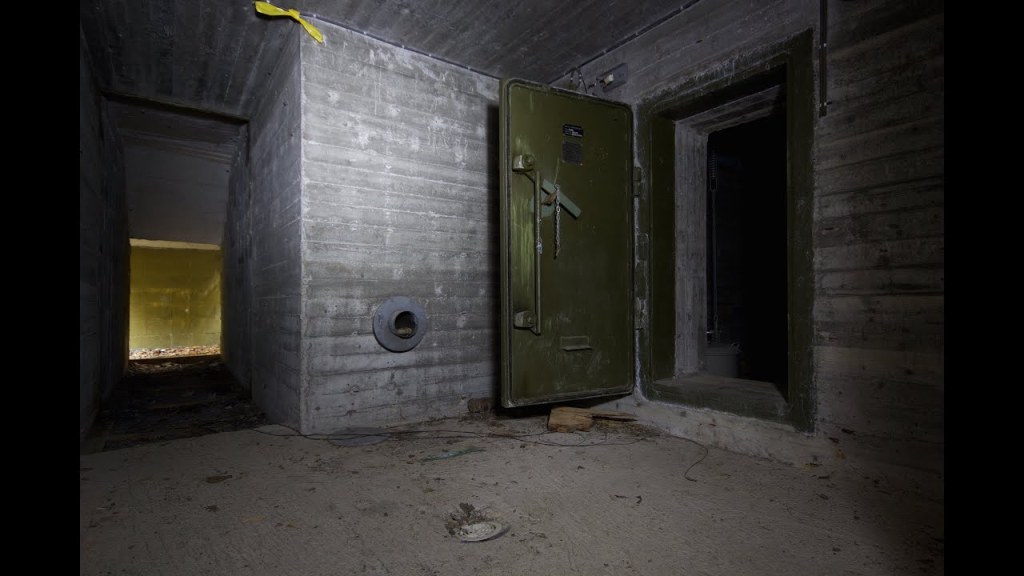Underground bunkers have always held a certain fascination for many people. Whether they were built for military purposes, as fallout shelters during the Cold War, or for secret government officials, these hidden structures evoke a sense of mystery and intrigue. In this article, we will explore various aspects of underground bunkers from different time periods and purposes.
One interesting aspect is the abandoned underground bunkers in rural areas. These hidden relics can often be found in remote locations, far away from prying eyes. Exploring these forgotten structures can provide a glimpse into the past and offer a unique perspective on history.
Another intriguing topic is Cold War-era underground bunkers. During this tense period in history, governments around the world constructed numerous underground facilities to protect their citizens from potential nuclear attacks. Some of these bunkers still exist today and serve as reminders of a bygone era.
In recent years, there has been a trend of converting underground bunkers into art spaces. Artists have taken advantage of the secluded nature of these structures to create immersive and thought-provoking installations. These converted bunkers offer visitors a chance to experience art in an unconventional setting.
National parks also hold their fair share of forgotten underground bunkers. These hidden gems can be found nestled among trees or concealed beneath hillsides. Exploring these remnants provides insight into how nations once prepared for potential threats within protected natural landscapes.
The architecture and design of underground bunkers are also noteworthy topics to explore. From utilitarian military designs to more elaborate civilian shelters, each bunker tells its own story through its construction techniques and layout.
Scientific research has often utilized underground bunker facilities due to their controlled environments and isolation from external factors. These specialized spaces have been used for experiments ranging from climate studies to astronomy research.
Moving on to more secretive subjects, there are secret underground bunkers that were specifically designed for government officials’ use during times of crisis or war. The secrecy surrounding these facilities adds an air of intrigue to their existence.
Some underground bunkers are even rumored to be haunted, with paranormal stories and urban legends surrounding them. These eerie tales only add to the allure and mystery of these hidden spaces.
For those who choose to live off the grid, underground bunker survivalist communities offer a sense of security and self-sufficiency. These communities often consist of like-minded individuals who have chosen to prepare for any potential disasters by creating self-contained living spaces underground.
Escape routes and hidden entrances are also essential elements when it comes to underground bunkers. The ability to enter or exit discreetly is crucial in times of emergency or secrecy. Exploring the intricate network of tunnels and passageways can be an adventure in itself.
Many countries around the world have turned decommissioned military bases and bunkers into museums, providing visitors with a glimpse into their history. These museums showcase artifacts, exhibits, and even reenactments that bring the past back to life.
World War II played a significant role in shaping bunker construction techniques as nations sought refuge from bombings and attacks. Studying these historical structures provides insight into how societies adapted during times of conflict.
In urban areas, nuclear fallout shelters were created as a response to the fear of atomic warfare during the Cold War era. Some of these shelters still exist today but have been repurposed for other uses such as storage or parking facilities.
Not all activities associated with underground bunkers are legal or noble. Some individuals have used these hidden spaces for illegal activities such as drug production or human trafficking. Exploring this darker side reveals how criminals exploit hidden locations for nefarious purposes.
Urban legends often surround abandoned underground bunkers, adding an extra layer of intrigue and mystery. Tales about secret experiments, ghostly apparitions, or hidden treasures create myths that capture our imaginations.
Communication tunnels were another feature during the Cold War era when secure lines were necessary between key government buildings. Forgotten underground passageways still lie beneath certain cities, their purpose long since forgotten.
Hidden chambers beneath famous landmarks are a fascinating topic. From the catacombs beneath Paris to hidden tunnels below ancient pyramids, these secret spaces hold untold secrets and historical significance.
Throughout history, bunker construction techniques have evolved. From ancient caves and tunnels to modern reinforced concrete structures, each era has left its mark on underground architecture.
Finally, subterranean tunnels that connect multiple underground bunkers offer urban explorers a unique opportunity to uncover hidden networks. These interconnected systems can provide a sense of adventure and discovery as they lead from one hidden space to another.
In conclusion, underground bunkers have captivated our imaginations for various reasons throughout history. Whether abandoned and forgotten or repurposed for new uses, these hidden spaces continue to intrigue us with their stories of survival, secrecy, artistry, and even the supernatural. Exploring their mysteries allows us to delve into different aspects of human history and our fascination with concealed spaces.

Leave a comment